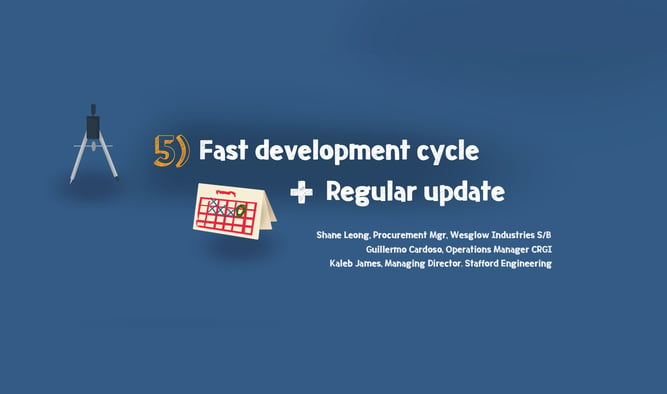Menu

The visual component has always played a key role in communication. Introducing images has proven to lead to a faster understanding, as reading an image is in everyone´s reach and takes less time than reading a text. If collecting data in spreadsheets leads to a long trail of paper work, maybe it is time to look for a smarter solution. If the conversation is about efficiency, why not go visual?

From the ancient civilization to modern day society, the visual element has always been a form of communication. Let’s not forget ancient Egypt used hieroglyphs, visual elements to compose and describe a whole world from beginning to end. In the Middle ages, as a gross majority of society couldn´t read, the world was again explained through images, from its creation to its raging apocalypse. Baroque made visuals rich and overdressed while centuries later, images and visual communication got rid of the excess. Contemporary age stripped the last remains of over-information, focusing on a minimalist approach, allowing the chance to feature visual elements on broader fields.
If there is a primary function for an image, it is to inform; and if a phrase could underline the importance of such a component that would be “an image is worth a thousand words”. The understanding of a situation at a glance saves time, money and energy. And oddly creates a feeling of unity as no matter your background, a person will achieve a faster understanding if coming across illustrative visuals rather than a big explanatory text.
Industries and staff meetings always include visual elements during their presentations, as it introduces and reinforces ideas. So why not take it to the next level? Introducing visuals on your day to day schedule has proven to increase efficiency for the above mentioned reasons. In working environments involving many people and interdependencies in job, tasks and resources, such as job shops or small-to order manufactures it is not rare that some information might get lost in the way or specific requirements might not be met on time. What if there was a way to simplify it? What if there was a way to make it easier, visual and approachable at all stages?
If there was a way to illustrate what is going on or needs to be done in your job shop, would you take it? What if there is a system that can provide a visual replica of your job shop floor, with the ability to pen down frequent changes of multiple many tasks, deadlines and dependencies of resources while providing a clear communication with all parties involved? Too good to be true? Maybe it is a clever idea to use visuals when scheduling the production process in depth. The visual component has always helped communication and understanding before, so why not now?
Visual Job Shop Scheduling might just do the trick for you. In job shop floors, with ever changing deadlines and many different specifications for each order, it is sometimes hard to keep track with the data and up with the timeframes. Visually scheduling from the beginning to the end will provide a better understanding on the production process and will allow to comfortably and reliably meet delivery times and better utilize resources. And why is that? Because the overall view of what is needed to do in order to bring the order to life will be visually displayed on the screen, labeled by colours and charts and will give the user the opportunity to fit work force or edit baselines with enough anticipation to schedule a smart route of action in order to meet the deadline.
just plan it is a production scheduling software plus scheduling tools & best practices to help high-mix low-volume make-to-order manufacturers gain transparency and control over their shop operations. The software plus its methodology is used by thousands of people around the globe. They consistently achieve improved on-time deliveries, shorter lead times, and better utilization of their resources.
As just plan it is not just software, but a lot of processes and best practices, we recommend that you start with an exploratory meeting. If we agree that there is a fit between your requirements and our approach, we'll build a prototype for you.
Hence, it all starts with a meeting. Book that meeting now.
These Stories on Machine shop scheduling
Made with by BOYUM IT SOLUTIONS GmbH (Copyright © 2024) Read our Privacy Policy & Terms of Service
No Comments Yet
Let us know what you think